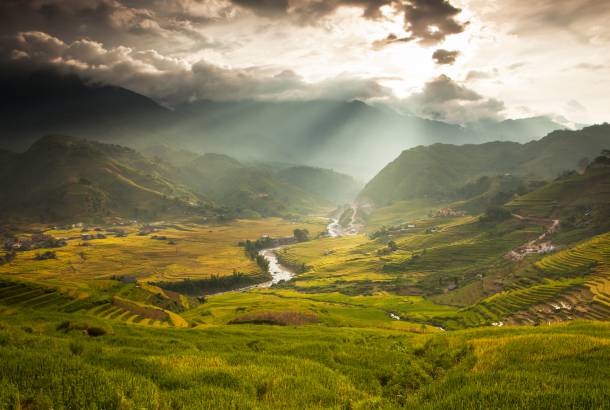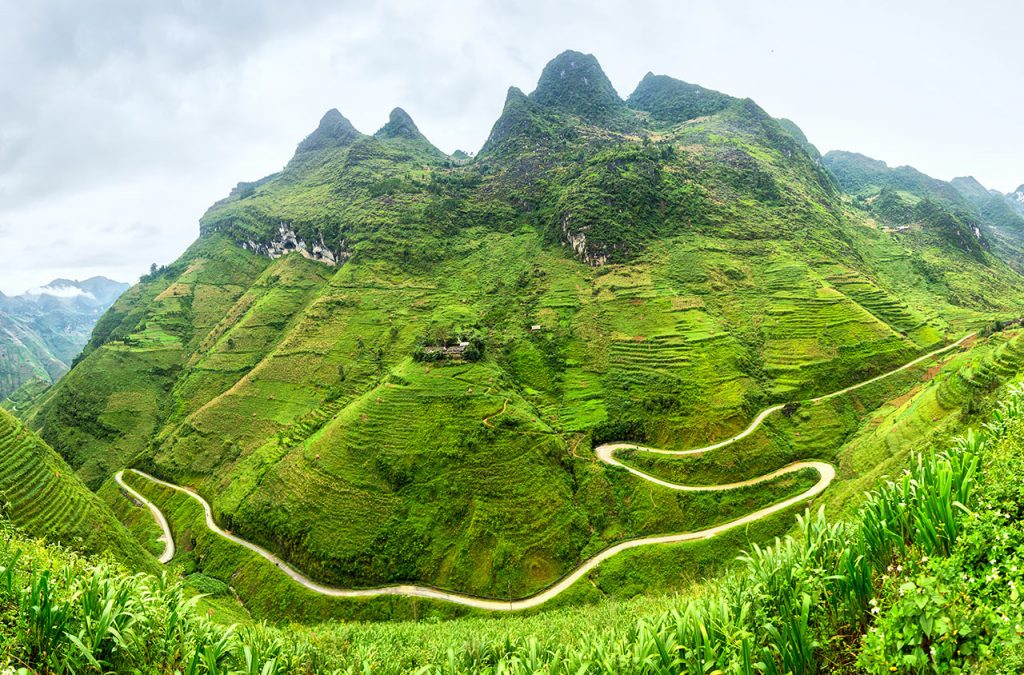North Vietnam and the Highlands
The northern region of Vietnam is a land of remarkable scenery with high rolling mountains, dramatically steep valleys and magnificent rice paddies creating a patchwork of contours. It’s here you’ll find endless opportunities to enjoy a host of trekking opportunities from easy walks along well-trodden paths to strenuous treks over the course of a couple of days. It’s here you’ll also find Vietnam’s tallest mountain peak – Fansipan – at a height of 3,143 metres above sea level silently waiting to challenge those looking to scale its summit. What makes this part of Vietnam even more attractive to outdoor enthusiasts is the vibrant hill tribe culture and the ethnic minorities that call this region home.

An Introduction to the Hill Tribes of Northern Vietnam
Over 50 distinct ethnic groups are recognised in Vietnam, each with their own unique language and culture though all share a traditional rural existence that has passed down the generations, cultivating the land for crops and cattle. Ethnic minorities make up between 10 to 15 percent of the population in Vietnam, which equates to around 12 million people, and these minorities are separated into eight major groups based on language, which in turn are separated into 54 subgroups based on dialect and clothing.
To help you know your Tay from your Thai, we’ve put together this quick guide to the main hill tribe groups you’ll encounter while trekking in northern Vietnam.
Best Places in Vietnam for Hill Tribe Trekking
From the Tay villages in Vietnam’s far northeastern corner to the colourful Hmong villages where women dress in elaborate embroidered regalia, Vietnam’s hill tribe towns are a fascinating draw and it’s possible to trek to many of these hamlets meeting locals along the way with the option to sleep at local homestays on longer trekking trips. Here’s our choice of Vietnam’s top spots for hill tribe trekking whether you’re looking for tried and tested routes or off-the-beaten track escapes.

Best Time for Trekking in Vietnam
The dry season is between October and May and this is the best time for trekking in northern Vietnam. Within this season some months stand out as better options than others, chiefly March and April for warmer temperatures, spring blooms and little rain. Generally October and November experience relatively stable climatic conditions with cooler temperatures and clear blue skies, more often than not. December to February can be bitterly cold though the possibility of snow dusting the landscape has its draw and what with holidays this can be a surprisingly busy period, especially in Sapa.
Bear in mind that the weather at these altitudes is highly changeable and it may rain at any time so pack accordingly (more on that below). Fog is also common up in the mountains and so on occasion those perfect valley vistas may be somewhat obscured.


